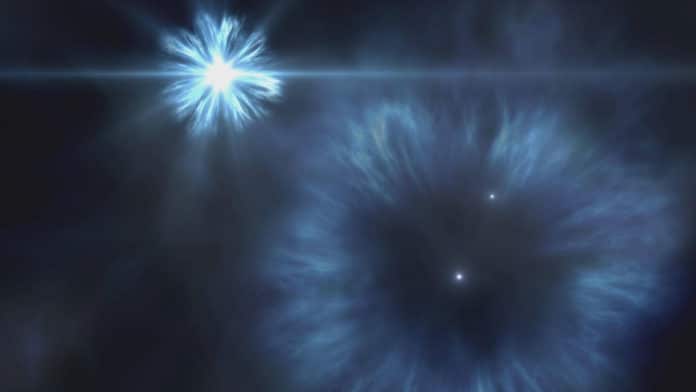The star J0815+4729 is a star with an ultra-low metallicity in the constellation of Lynx. It is at a distance of 7,500 light-years (2.3 kiloparsecs) from the Sun and is 33,00 light-years (10 kiloparsecs) from the Galactic Center.
Astronomers from the University of California San Diego, the Instituto de Astrofísica de Canarias (IAC), and the University of Cambridge have recently detected very unusual chemical composition in the star’s atmosphere. Astronomers have discovered significant amounts of oxygen in the atmosphere of this primitive star.
The discovery was made using W. M. Keck Observatory on Maunakea in Hawaii. Moreover, it offers an important clue on how oxygen and other essential elements were produced in the first generations of stars in the universe.
Keck Observatory Chief Scientist John O’Meara said, “This result is fascinating. It tells us about some of the earliest times in the universe by using stars in our cosmic back yard. I look forward to seeing more measurements like this one so we can better understand the earliest seeding of oxygen and other elements throughout the young universe.”
San Diego astrophysicist Adam Burgasser, a co-author of the study, said, “Stars like J0815+4729 are referred to as halo stars. This is due to their roughly spherical distribution around the Milky Way, as opposed to the more familiar flat disk of younger stars that include the Sun.”
For the observation, astronomers used the data to measure the abundances of 16 chemical species in the star’s atmosphere, including oxygen. The data required more than five hours of staring at the star over a single night.
Jonay González Hernández, Ramón y Cajal postdoctoral researcher and lead author of the study said, “The primitive composition of the star indicates that it was formed during the first hundreds of millions of years after the Big Bang, possibly from the material expelled from the first supernovae of the Milky Way.”
The search for stars of this type involves dedicated projects that sift through hundreds of thousands of stellar spectra to uncover a few rare sources like J0815+4729, then follow-up observations to measure their chemical composition.
The results are published in the January 21, 2020 edition of The Astrophysical Journal Letters.
